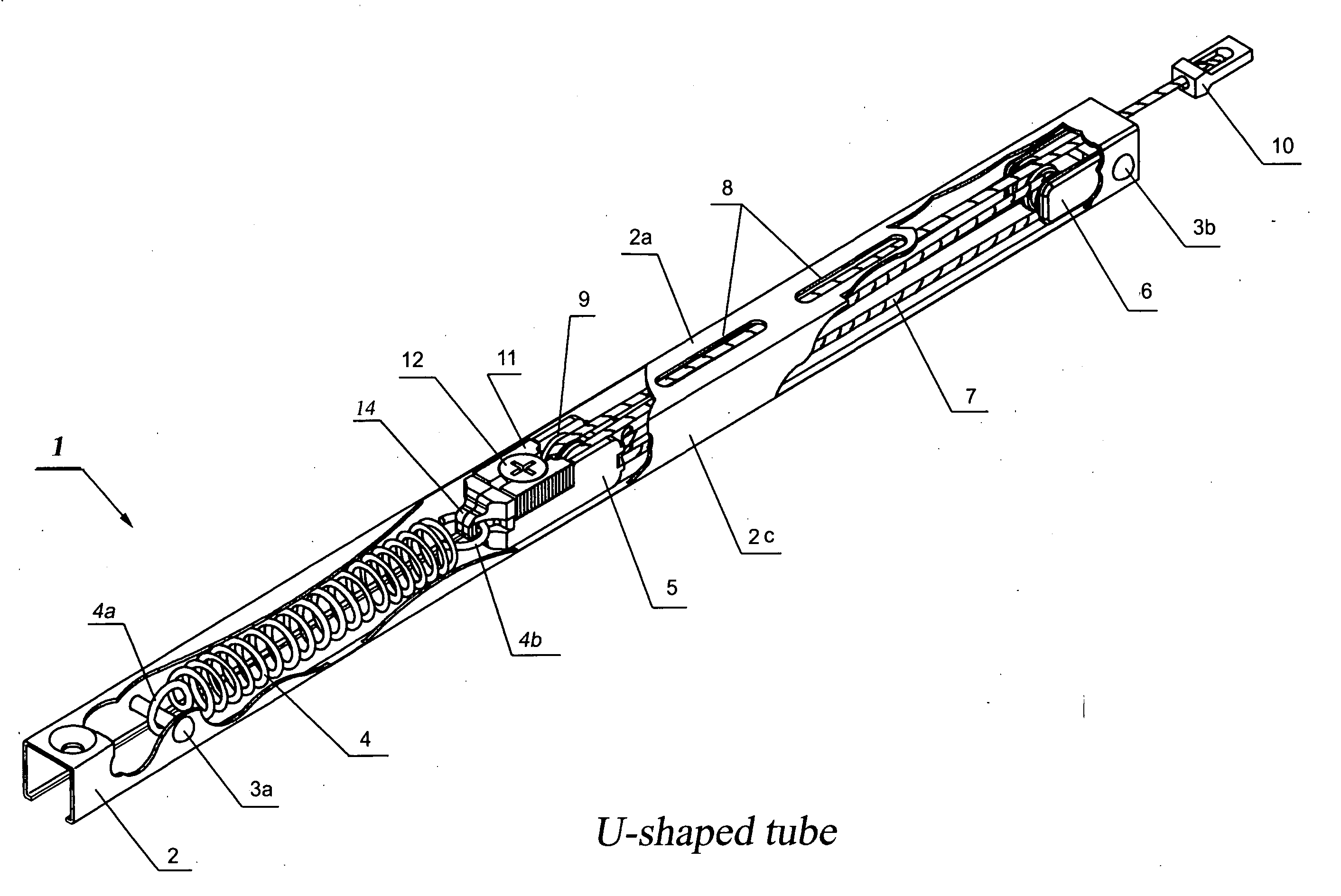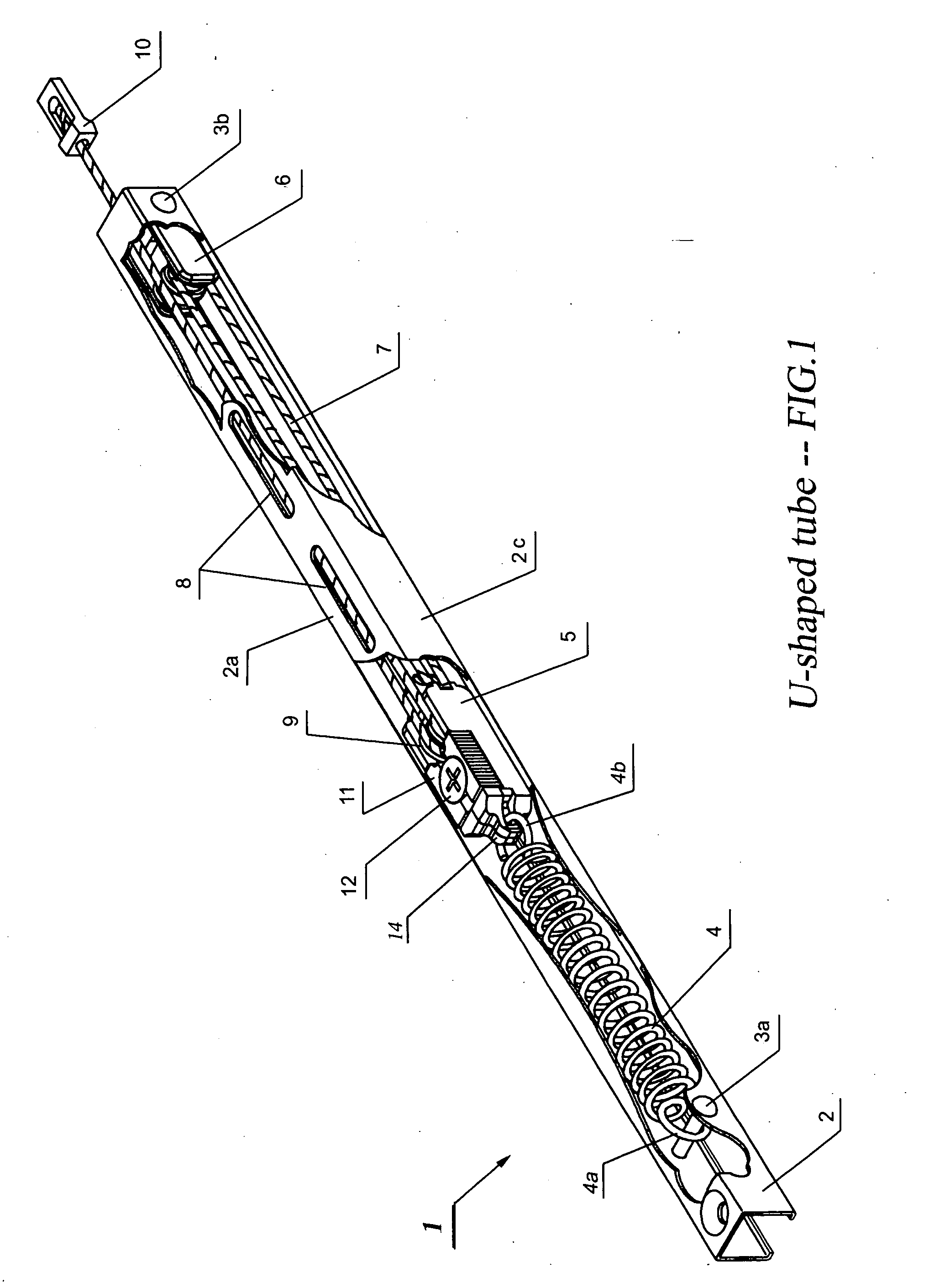Discretionarily adjustable friction block and tackle balance system and uses thereof
a technology of friction block and adjustable friction, which is applied in the direction of wing opener, multi-purpose tools, constructions, etc., can solve the problems of increasing the force exerted by the tension device, improperly balanced window sash placement, and inability to adjust the friction force, etc., to achieve the effect of improving the discretionarily adjustable friction block, easily and effectively
- Summary
- Abstract
- Description
- Claims
- Application Information
AI Technical Summary
Benefits of technology
Problems solved by technology
Method used
Image
Examples
example 1
Adjustable Balance System having a U-shaped tube and Corresponding Components
[0039] For a general understanding of an adjustable balance system 1 of the present invention having a U-shaped tube, reference is made to the drawings FIG. 1 to FIG. 6.
[0040] An adjustable balance system 1 of this invention as shown in FIG. 1 comprising a U-shaped elongated tube 2, a coil spring 4, a floating anchor subassembly 5, a fixed anchor subassembly 6, a cord 7 and a hook 10.
[0041] The U-shaped tube 2 has one topside 2a and two sidewalls 2c, shown in FIG. 1 and FIG. 2. There is on the topside 2a at least one hole or slit referred to herein as adjust hole 8 for exposing and for adjusting the adjust screw 12. The adjust screw 12 is rotatably mounted on the adjustable break 11 for splaying or contracting the adjustable break 11. The adjustable break increases or decreases the friction force between the inner surface of the tube and the floating anchor subassembly 5. In an embodiment, the floating a...
example 2
Adjustable Balance System having a square-shaped tube or rectangular-shaped tube and Corresponding Components
[0056] In an embodiment of the adjustable friction force block and tackle window balance system 101 of this invention, the tube 102 is square-shaped or rectangular-shaped. An adjustable friction force block and tackle window balance system as shown in FIG. 7 comprises an elongated tube 102 having four sides, a coil spring 4, a floating anchor subassembly 105, a fixed anchor subassembly 6, a cord 7 and a hook 10.
[0057] In an embodiment, all the components of the adjustable balance system as shown in FIG. 7 are similar to the parts of the adjustable balance system as shown in FIG. 1, except for the floating anchor subassembly 105 and the square-shaped or rectangular-shaped tube 102. The floating anchor subassembly 105 as shown in FIG. 7 is specially designed for the square-shaped or rectangular-shaped tube 102. The square-shaped or rectangular-shaped tube 102 will be collecti...
PUM
 Login to View More
Login to View More Abstract
Description
Claims
Application Information
 Login to View More
Login to View More - R&D
- Intellectual Property
- Life Sciences
- Materials
- Tech Scout
- Unparalleled Data Quality
- Higher Quality Content
- 60% Fewer Hallucinations
Browse by: Latest US Patents, China's latest patents, Technical Efficacy Thesaurus, Application Domain, Technology Topic, Popular Technical Reports.
© 2025 PatSnap. All rights reserved.Legal|Privacy policy|Modern Slavery Act Transparency Statement|Sitemap|About US| Contact US: help@patsnap.com



